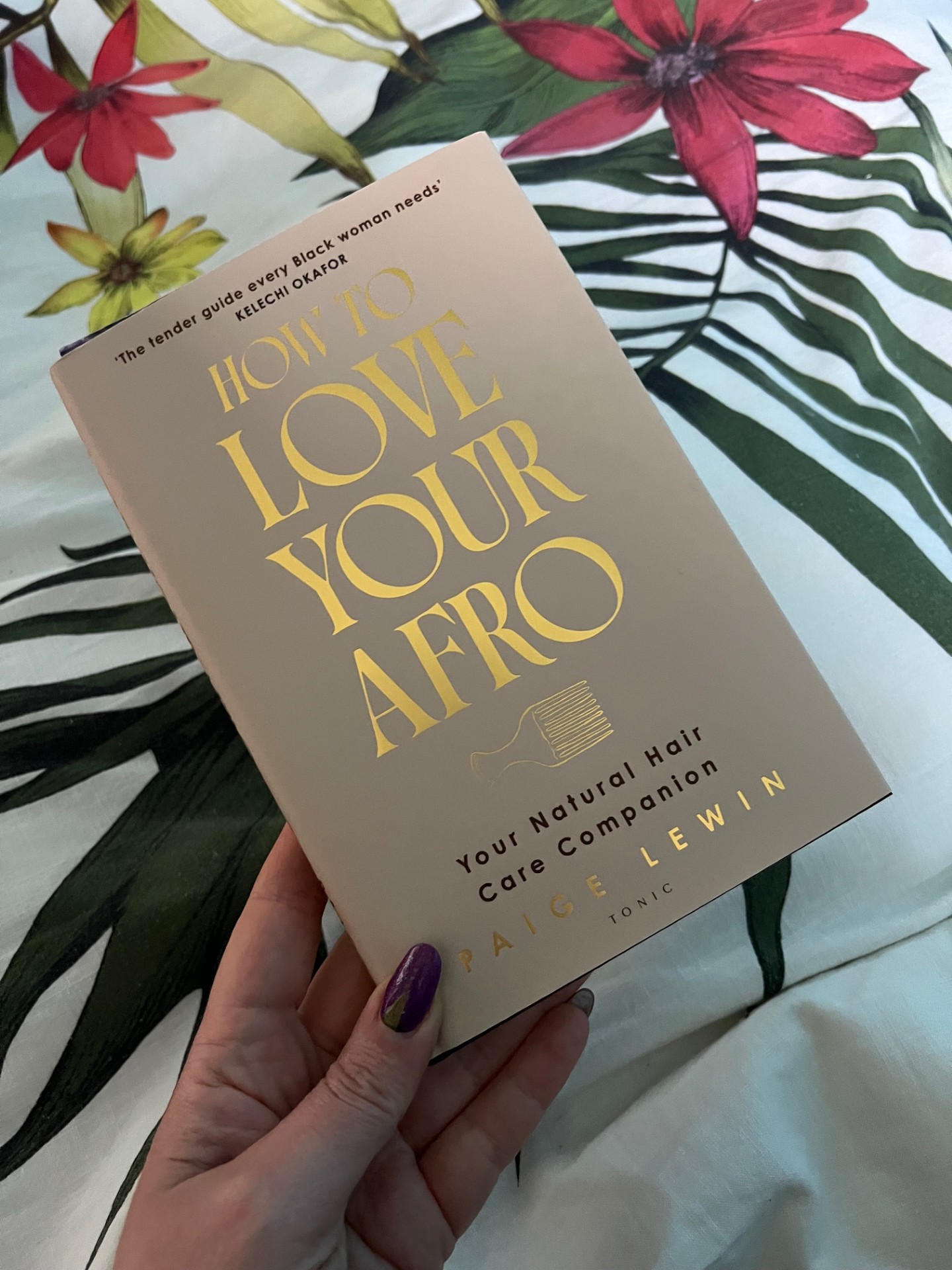Becky is a female personal trainer based in Horsham, West Sussex. One of the most striking things about her look is her naturally curly hair, which she hasn’t always loved. Recently published book How to Love Your Afro by Paige Lewin has helped…
I spent the first year of my life completely bald. Not particularly unusual for a newborn baby, you might think. It is when you consider the mane I’ve lived with since. Once my head finally grew some hair, it was thick, dark, and curly, almost as though I was making up for lost time. And so, the journey began…
Life with curls in the 90s
What a time to be alive. I don’t remember the years when the perm reigned supreme, I just missed them. Although my mum knows all about it, and used to get stopped in the street when she was pushing me around, people commenting on my gorgeous hair and asking where she got it done (because her own isn’t even wavy, so people assumed mine was a perm). Despite being horrified that people would think that she got her 3-year old’s hair permed, she managed to joke that it cost £40 a go (a fortune at the time).
As the 90s wore on, curls got less and less fashionable. Life was all about hair being straighter and straighter in the White-centric beauty world, with home hair straighteners being one of the bestselling electricals. And straight was just not what my hair wanted to be. My natural curl pattern is very much a stubborn corkscrew, and nobody else in my family had it, meaning nobody knew how to care for it.
A different era of haircare
It’s important to remember that the internet hadn’t made it into our homes yet, never mind us entering the stage of web3, when internet content became user-generated and highly educational. I don’t know whether my parents ever tried the local library for haircare advice, but they’d have found nothing there either. My aunt was a beauty journalist working in London, and well-connected with the hair industry. She’d occasionally offer up a product for me to try, and without fail, it would be stickier than primary school glue, smell awful, and come with precious little instruction for use.
From the age of 6, I became regularly acquainted with a strong reaction from all hairdressers: they’d take one look at my hair, gasp in awe and be excited to touch it… and then horrified that they might have to try and do something with it, a full on rabbit in the headlights panic that I soon understood to be totally normal.
Then, when I was 8, the bullying started in the playground. And it’s no wonder that my hair and I developed a difficult relationship.
How to Love Your Afro
Earlier this year, having finally (finally) felt like I’d reached a point where I better understood my hair and had something resembling a positive relationship with it, promo for How to Love Your Afro popped up in my feed.
I squinted, because I don’t have an afro. It’s something that many, many people have got wrong over the years (if I had £1 for every time in my teens alone that someone suggested I go to a Black salon…). I’m White. Afros are beautiful. So are my curls. The two are both hair types, and they do differ.
Plus, in recent years in particular, haircare has been politicised and discussed in the same arena as anti-racism, for very good reason. When I saw “afro” in the book’s title, I didn’t think the book was written for me. I checked author, Paige Lewin’s page, because my curiosity had been hit, and there are people I know who I thought might like to know about this book, even if I weren’t the intended audience. And instantly learned that the book is for people with all textures.
I pre-ordered the book, then inhaled it when it arrived once published. I nodded. I learned. I cried. I saw things differently. I sent photos of a page to friends. How to Love Your Afro brought back some difficult memories I hadn’t looked at in a long time. It also gave me a new understanding – something many hairdressers over the years hadn’t communicated – about shampoo, conditioner, other products, dermatologists, trichologists, and much more.
Who is How to Love Your Afro for?
Since finishing the book, I’ve barely shut up about it, and this is the most important part: it’s not just for those with curls, coils, or afros.
It’s for parents. It’s for those who care for a curly-haired person. It’s for hair professionals (PLEASE. PLEASE get a copy in every salon in the land). It’s for teachers. It’s for friends and lovers (the section on relationships and having the courage and confidence to show your true texture to those you date is really important).
If this book had existed 30 years ago, the bullying I suffered may have been handled differently. The hairdressers I visited might have had a clue as to how to approach my hair (rather than just cooing at it). And, more importantly, I might have found some peace sooner.
My past, present, and future selves thank you, Paige.
